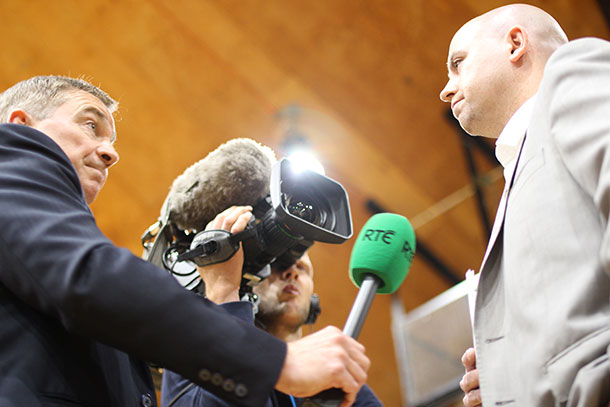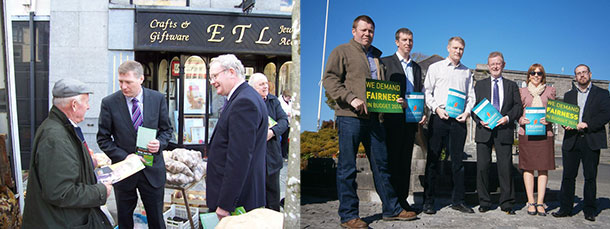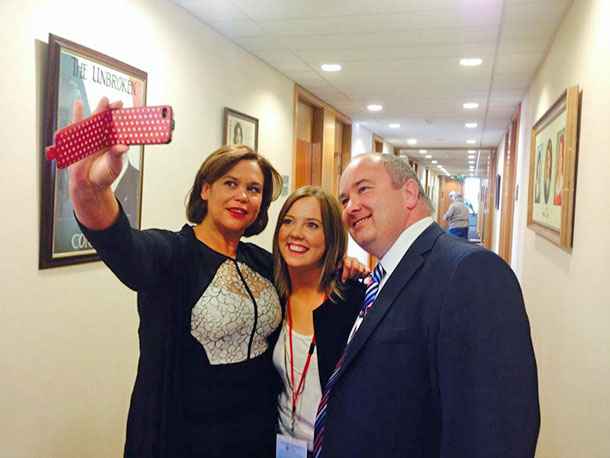2 November 2014 Edition
Strong showings for Sinn Féin
BY-ELECTIONS

WHILE disappointment was probably the first reaction of many republican supporters after being pipped for the Dublin South-West by-election seat by the Socialist Party’s Paul Murphy running under the flag of the Anti-Austerity Alliance, the Sinn Féin performances there and in Roscommon/South Leitrim in October were, in fact, very good and augur well for the next Dáil general election.
In Dublin South-West, Cathal King topped the poll with 30.3% of the vote and was just beaten on the eighth count for the seat.
In Roscommon/South Leitrim (where winning Independent candidate Michael Fitzmaurice had the backing of outgoing TD Luke ‘Ming’ Flanagan, whose European Parliament success caused the by-election), Sinn Féin’s Martin Kenny was third on the first count, holding on until the fifth.
In the Seanad by-election, the key transfer of 11 of the 22 votes for Sinn Féin’s Catherine Seeley to Independent candidate Gerard Craughwell played a decisive role in his election. It brought a fitting end to the Fine Gael debacle surrounding this seat and the opportunistic cronyism that characterised the candidacy of Taoiseach Enda Kenny’s nominee, John McNulty.

• Cathal King topped the poll in Dublin South West with 30.3% but just missed out on transfers at the eight count
Dublin South-West growth
The return of Seán Crowe to the Dáil in 2011 was the catalyst for more growth in this constituency reflected in the increased representation across the South Dublin County Council area in this summer’s local authority and EU elections.
In the 2014 local elections, Sinn Féin won 18,411 votes, 23.9% of the vote, nearly double the 2009 performance, with the party electing nine councillors and becoming the single largest group on South Dublin County Council.
Cathal King’s by-election performance demonstrates that this support is still solid despite the negative campaigns of the party’s rivals. With a vastly-decreased turnout, nearly half of that recorded in 2011, the Sinn Féin first-preference vote tally was almost at the 2011 figure, with the party’s vote share jumping from 17.7% in 2011 to 30.3% in 2014.

• Martin Kenny almost doubled the Sinn Féin vote in Roscommon/South Leitrim
Roscommon/South Leitrim
Sinn Féin elected four members to Leitrim County Council in May 2014, with 19.19% of the vote, an increase of 6.65% on 2009. In Roscommon, the party elected one councillor, Michael Mulligan, from the Athlone electoral area.
Across Roscommon, Sinn Féin won 8.02% of first-preferences, up 3.79% on the 2009 total. In the May local elections, Sinn Féin took 5,085 first-preferences in the local authority areas of Carrick on Shannon and Ballinamore from South Leitrim and the Athlone, Boyle and Roscommon electoral areas that make up Roscommon County Council.
With 5,906 votes in the same electoral area this time around, it’s clear that the party is still growing in this constituency.
The failing Establishment parties
In the Dublin South-West constituency, Fine Gael, Labour and Fianna Fáil all lost votes on their 2011 performance.
For Fianna Fáil (who had a disastrous showing in 2011, losing two TDs here), the party trailed in fifth on the first count with 8.7% of the vote, a further 2.7% down on 2011 and a perhaps unbridgeable chasm from the 39.27% the party won here in 2007.
Fine Gael’s vote was down 19% in this constituency compared with 2011 and the Labour Party fell a massive 27.8%, making both the Labour seats look shaky next time around.For Fine Gael in Roscommon/South Leitrim there was another substantial vote shedding with the party down 21.7% on the 2011 election. The Labour Party came in sixth on the first count, down 3.3% to 6.1%.Fianna Fáil did record a 7.1% increase on 2011 but their 22% is some way off the 38.84% the party won in 2007.
Most interestingly is that Fianna Fáil won 35% of the Roscommon vote in the 2014 local elections and 34% across the Leitrim electoral areas but wasn’t able to repeat that performance in the by-election.
One conclusion of this is that the local electorate is still wary of returning a Fianna Fáil TD to Leinster House with Sinn Féin the clear beneficiary and gaining increasing voter endorsement.

• Catherine Seeley’s transfers were key to preventing a Fine Gael victory
The real opposition
Across the 26 Counties, annual budgets and five-year county council development plans are being drawn up this winter, with greater Sinn Féin involvement than ever before. It is a significant step in the party’s growing importance and relevance.
Sinn Féin is beginning a long-term process of reforming the first tier of government in the state and, for the first time ever, providing an electoral voice to disenfranchised communities ignored by the Fianna Fáil/Fine Gael/Labour hegemony of the past that believed that local government was solely a tool for political advancement, cronyism and, at times, endemic corruption.
Five months from the May local elections, the by-election results show that the Sinn Féin message is still growing across the state and that Sinn Féin are the true opposition to the current coalition and the failed Fianna Fáil party.
Sinn Féin Roscommon/South Leitrim
2011: Vote 4,627, %: 9.76%, Turnout %: 77.88%
2014: Vote 5,906, %: 17.7%, Turnout %: 53.84%
Sinn Féin Dublin South-West
2011: Vote 8.064, %: 17.17%, Turnout %: 66.51%
2014: Vote 7,288, %: 30.3%, Turnout %: 34.49%




